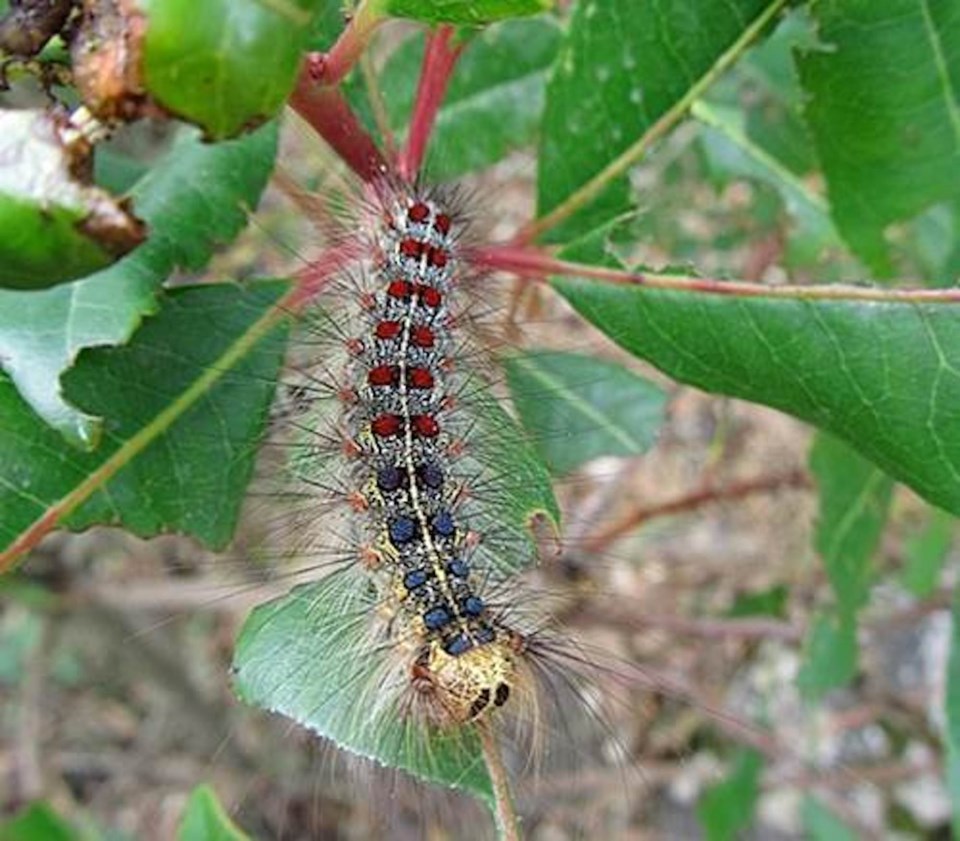NEWS RELEASE
LAKE SIMCOE REGION CONSERVATION AUTHORITY
*************************
LAKE SIMCOE WATERSHED – Tree monitoring indicates that southern Ontario, including the Lake Simcoe watershed, is likely to experience outbreak levels of the European Gypsy* Moth (Lymantria dispar dispar or LDD for short) this year. The moth is an invasive species introduced to eastern North America from Europe in the late 1800s.
The invasive insect goes through cycles in which the population increases for several years and then declines. This year is predicted to be an outbreak year, based on observations and monitoring in 2020 and through the winter of 2021.
The caterpillar stage of the invasive moth is the most problematic. It eats leaves… A LOT of them. In fact, the caterpillar can consume as much as one square foot of leaves per day.
The caterpillar will feed on just about any tree, but its favourite species is the Oak. Healthy trees should be able to survive the onslaught, however if an outbreak lasts a few years, it can result in tree death.
There are ways to minimize the damage to the trees on your property:
- The invasive moth overwinters in the egg stage in buff-coloured (light beige) egg masses laid on a tree’s trunk or limbs. You can remove the egg sacs before they hatch in late April and early May.
Watch this video describing how to remove and destroy the egg masses, courtesy of the City of Markham, Ontario. - Use burlap bands to trap and destroy the caterpillars. As the weather warms in May and June, caterpillars tend to feed at night, and climb down the tree to shelter from the heat during the day. Wrap burlap or light-coloured cloth around tree trunks to collect the caterpillars. Fold the burlap back over itself to create a cavity, and the caterpillars will collect in there. Once a day, scrape the caterpillars off the burlap into a bucket of soapy water, then re-apply the burlap. This will help reduce the number of caterpillars in your tree. This technique may also be used later in the summer to collect female moths (which are unable to fly and so will climb up the tree to lay their eggs).
Please do not use pesticides. They are destructive to the environment, contaminating our local waterways, and are harmful to our pollinator species and other wild animals.
Despite the fact that this is an invasive species, the caterpillars will be a source of food for local native species such as robins, blue jays, eastern towhees, red-eyed vireos, grey catbirds, Baltimore orioles and indigo buntings.
Further resources about Lymantria dispar dispar can be found on the York Region website.
* We recognize the term “gypsy” is culturally insensitive. In future, we will identify the insect as much as possible by its Latin name (Lymantria dispar dispar or LDD for short).
LSRCA’s mission is to work with our community to protect and restore the Lake Simcoe watershed by leading research, policy and action.
*************************



